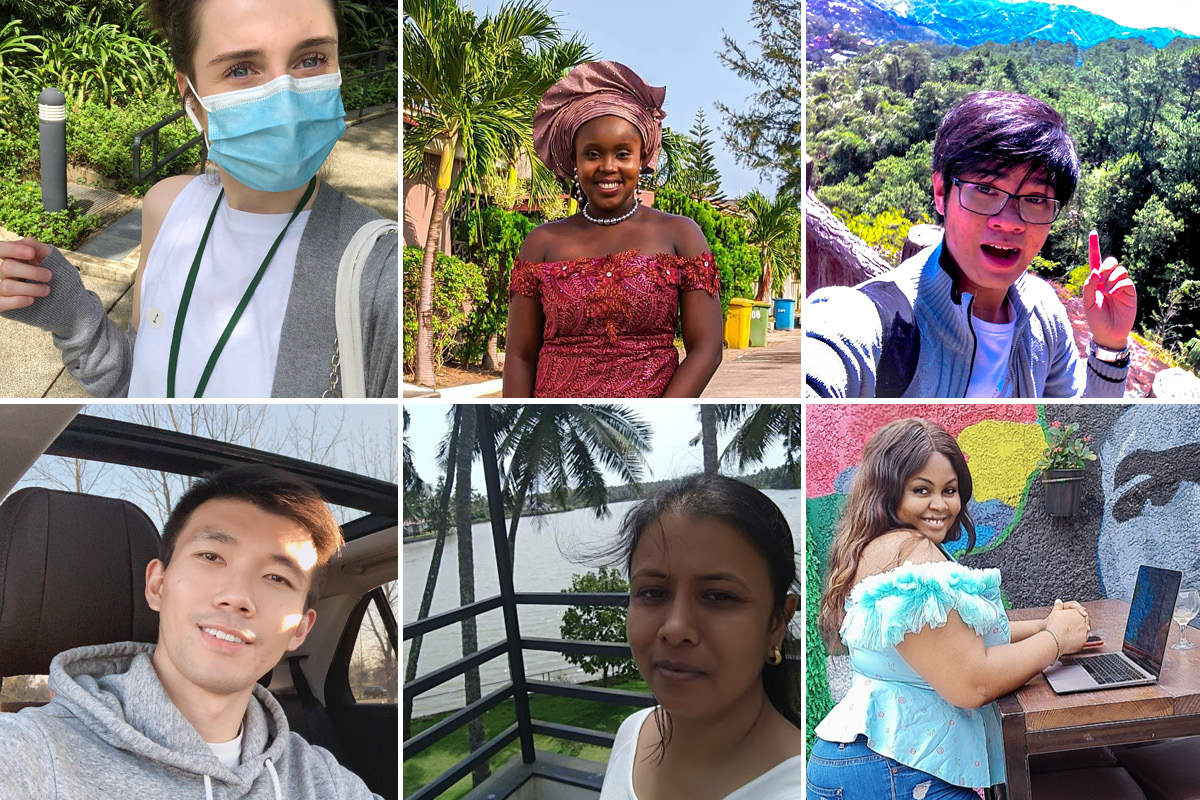Asian Institute of Management Philippines
ESMT Berlin Germany
Hong Kong University of Science and Technology Business School Hong Kong SAR China
INCAE Business School Costa Rica
Yale School of Management United States
For students at the Yale School of Management and other Global Network for Advanced Management member schools, Global Virtual Teams (GVT), a course developed six years ago to challenge and prepare future leaders to collaborate effectively across different time zones, took on even more relevance this past year as the COVID-19 pandemic led to near-universal lockdowns.

Participation of students throughout the Global Network is fundamental to GVT, which began as a core course in Yale SOM’s integrated MBA curriculum. Students apply the skills they learn from lectures over the course’s first few days during a subsequent real-time negotiations exercise that they tackle alongside their peers from other schools.
During spring semester 2021, 703 students hailing from 11 Global Network schools participated in GVT, including the Asian Institute of Management, Philippines; EGADE Business School, Tecnológica de Monterrey, Mexico; ESMT Berlin, Germany; FGV Escola de Administração de Empresas de São Paulo, Brazil; Hitotsubashi University Business School, School of International Corporate Strategy, Japan; Hong Kong University of Science and Technology Business School, Hong Kong SAR China; Indian Institute of Management Bangalore, India; INCAE Business School, Costa Rica; Lagos Business School, Pan-Atlantic University, Nigeria; Pontificia Universidad Católica de Chile School of Business, Chile; and Yale SOM.
Beginning in February, students broke into five- or six-person teams, with at least two Global Network schools represented in each group. After getting to know one another, teammates faced off against another team in a real-time, case-based negotiation exercise.
Navigating unexpected obstacles is an essential aspect of this hands-on portion of the GVT course—and, thanks to the vicissitudes of the COVID-19 pandemic, students this year were perhaps even more prepared for the unexpected than any other cohort before them.
Marissa King, a professor of organizational behavior at Yale SOM, taught GVT to students at SOM. She said that this year’s students arrived with a “strengthened skill set” for virtual work gained from their experience with remote learning during the pandemic. That experience, combined with “the impressive amount of research that has been done over the past year on new best practices…served to rapidly accelerate learning,” she said.
Silke Bucher, assistant professor of leadership and organizational behavior at INCAE School of Business, who taught GVT at INCAE, said that COVID-19 has served to shine a light on “the communication and collaboration challenges that millions of companies are facing.” The comfort students have developed with working virtually will serve them well as leaders, Bucher said.
Hitotsubashi student Jirawin Tochirakul, who will join Yale SOM’s Master of Advanced Management Class of 2022 in August, appreciated the applicability of lessons learned during GVT to the future of work.
“With COVID-19, we’ve all realized that the old ways of working were not the most efficient, and that cross-border virtual teams will be more common in the future,” said Tochirakul.
Tochirakul said one of the biggest challenges teams faced was in establishing a vibrant working dynamic in a virtual setting—and one of the biggest takeaways was how that dynamic translated to the success of a team.
“The GVT exercises made me realize that getting to know my teammates on a personal level and getting to know their strengths and weaknesses, despite limited interactions, was critical to the success of our virtual team,” said Tochirakul. “It’s easier to achieve this understanding in a physical office, where we can observe how team members work and have casual interactions with them… In GVT, we do not have the luxury of physical interactions, so we had to be proactive in [figuring out] each other’s strengths and weaknesses and establishing a team dynamic.”
Lagos Business School student Yusuf Alege echoed Tochirakul’s sentiment, adding that the extra effort paid off by creating stronger teams that were better positioned for negotiating.
“During the GVT exercise it became clear that the success of the negotiating team was largely dependent on how well” team members understood each another, Alege said. In getting to know each other, he said, his team went beyond the usual recitation of degrees and job titles to learn about each other’s lives and beliefs. “What surprised me most was how amazingly quickly we can form deep connections with supposed strangers.”
